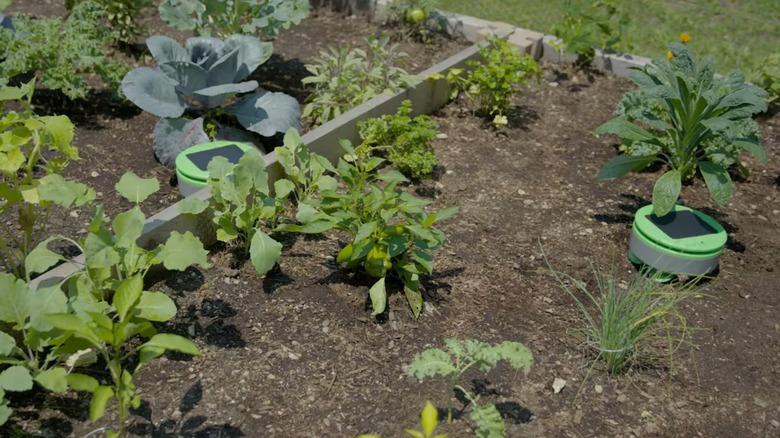Is The Tertill Garden Weeding Robot Really Worth Buying? Here's What Reviews Are Saying
We may receive a commission on purchases made from links.
Figuring out the best way to get rid of weeds in your garden has been a lifelong quest for many gardeners. Whether you've tried electric-shock products like the Weed Zapper Annihilator, formulas like the Foamstream that uses a patented foam to suffocate weeds, or a special tool designed to prevent back pain while pulling weeds by hand, you know that weeds are the enemy and it sometimes takes cutting-edge technology to eradicate them.
Enter the $350 Tertill Weeding Robot — pronounced "turtle" — which claims to be able to remove weeds in a garden up to 200 square feet in size. The robot's case is green and gray with a round top that sort of resembles a turtle shell. It runs on solar power and is completely weatherproof for deployment from spring through autumn. The idea is you can put it in the garden and forget about it. The robot uses digging wheels to churn up the soil around the rows of plants to prevent weeds from gaining a foothold. It also uses a built-in string trimmer to chop down weeds that establish themselves.
If you're imagining a robot vacuum that's made for the garden, you're not far off. In fact, Tertill comes from the same people who invented the Roomba robot vacuum. Just like there are pros and cons you should know before buying a robot vacuum, you should understand the pros and cons of the Tertill robot before investing in it. Consider if this automated robot is the right choice for your vegetable garden.
Why the Tertill Weeding Robot is the right choice for your vegetable garden
One of the biggest advantages of the Tertill Weeding Robot is the ability to set it and forget it. Some online reviewers were amazed at the work the robot did to chop down weeds over a few days without any oversight or attention. Because it runs on solar power, you don't have to worry about charging the battery or bringing an outside power supply to your garden. It simply works independently. Thanks to its rugged design and weather-resistance features, you don't have to bring it indoors when a storm is on the horizon, either.
If you'd rather not apply chemicals to take out the weeds in your garden, the Tertill is the perfect choice. Its work eliminates the need to add herbicides. It uses a separate motor to power each of the four wheels, giving it the best chance of avoiding becoming stuck. The four-wheel drive design lets it maneuver through uneven soil or a stray stick in the garden.
Some online reviewers say that it works as advertised. One reviewer even used two gardens — one with the Tertill and one without — to prove the efficiency of the robot gardener in keeping weeds at bay. One Amazon reviewer said following the manufacturer's directions for the garden layout provides the best chance at success. "I've had this weeder for two years, and it is still working great! It really does get all the weeds."
Reasons the Tertill Weeding Robot doesn't live up to the hype
Even though some reviewers liked how the Tertill worked, others were disappointed in the results. The Tertill Weeding Robot only has a 3.2-star rating on Amazon. Only 37% of Amazon reviewers give it a 5-star ranking, while 27% give it a 1-star ranking. "It always gets stuck. My garden is completely flat, but it can't cope," one Amazon reviewer wrote. "It spins in a circle and digs itself a hole that it can't escape from." Some reviewers say rocks and mud leave the Tertill struggling to move properly.
If you're expecting to deploy the Tertill in a weed-filled vegetable garden for a couple hours and come back to a perfect-looking space, you'll be disappointed. It only runs in intervals of two to five minutes every hour or two. Hand pulling remains the faster option for a small garden with a limited number of weeds. The string trimmer may initially struggle with some weeds, but it eventually takes them down over a few days.
Even though the Tertill robot can run independently, you will have to do some extra work to keep it operating. You might have to purchase string replacements for the weed whacker. Some gardeners install guards that protect the seedlings as they sprout so the Tertill doesn't inadvertently cut them down. For the best results, it'll take work to set up your garden with plants and rows spaced 1 foot apart, and you'll need to install a 4-inch barrier consisting of wood, brick, or plastic around the perimeter of the garden.


